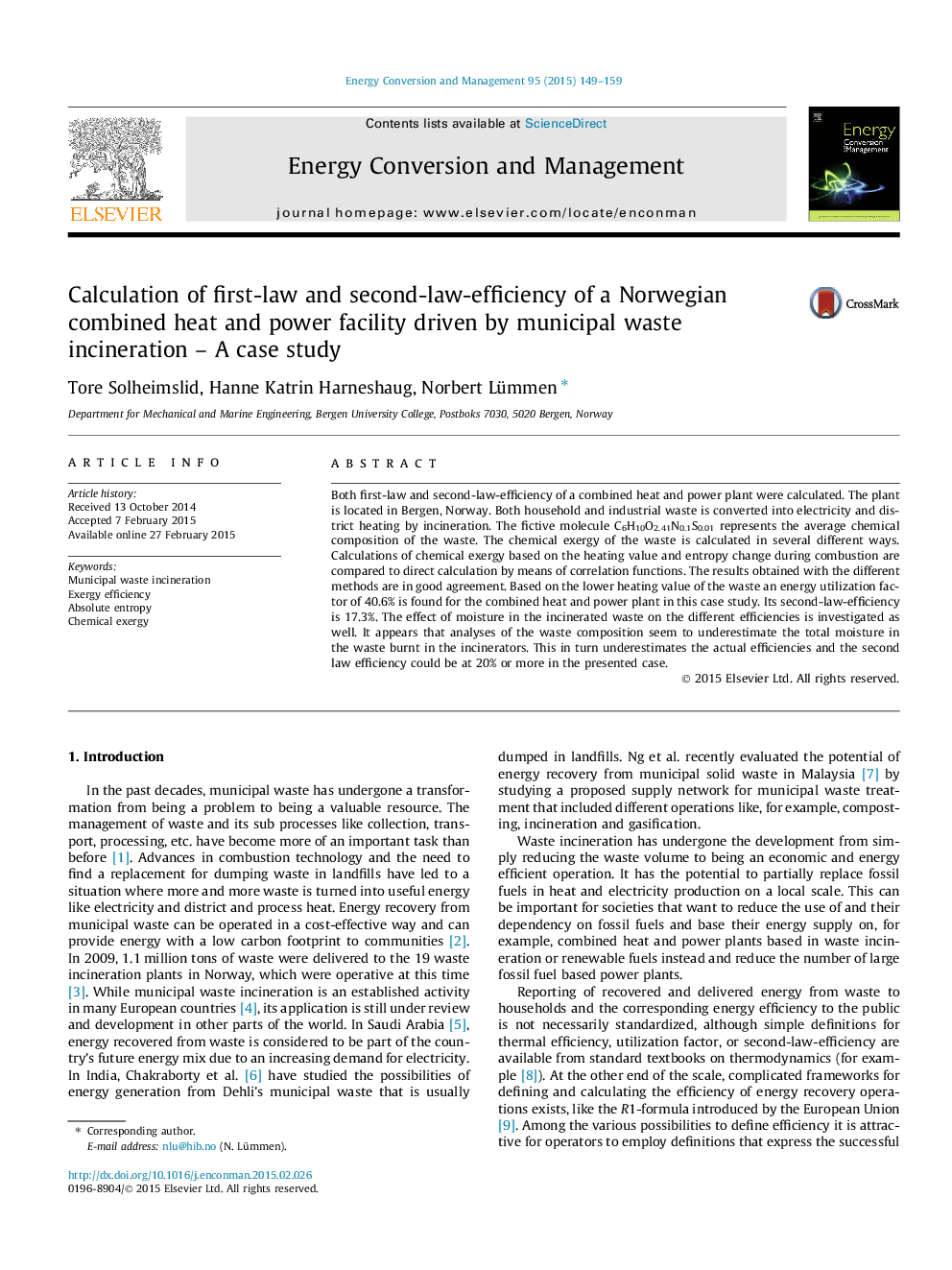| کد مقاله | کد نشریه | سال انتشار | مقاله انگلیسی | نسخه تمام متن |
|---|---|---|---|---|
| 765472 | 1462867 | 2015 | 11 صفحه PDF | دانلود رایگان |

• Calculation of first and second law efficiencies of a waste incineration plant.
• The waste was modelled as a fictive substance with composition C6H10O2.41N0.1S0.01.
• Different methods for calculating the chemical exergy of the waste were compared.
• Energy utilization was found to be 40.6% and the second law efficiency is 17.3%.
• Underestimation of moisture content leads to significantly lower efficiencies.
Both first-law and second-law-efficiency of a combined heat and power plant were calculated. The plant is located in Bergen, Norway. Both household and industrial waste is converted into electricity and district heating by incineration. The fictive molecule C6H10O2.41N0.1S0.01 represents the average chemical composition of the waste. The chemical exergy of the waste is calculated in several different ways. Calculations of chemical exergy based on the heating value and entropy change during combustion are compared to direct calculation by means of correlation functions. The results obtained with the different methods are in good agreement. Based on the lower heating value of the waste an energy utilization factor of 40.6% is found for the combined heat and power plant in this case study. Its second-law-efficiency is 17.3%. The effect of moisture in the incinerated waste on the different efficiencies is investigated as well. It appears that analyses of the waste composition seem to underestimate the total moisture in the waste burnt in the incinerators. This in turn underestimates the actual efficiencies and the second law efficiency could be at 20% or more in the presented case.
Journal: Energy Conversion and Management - Volume 95, 1 May 2015, Pages 149–159